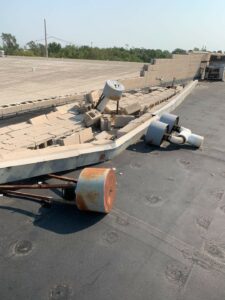When dealing with water damage, it’s crucial to understand the severity and potential risks involved. Water loss is classified by contamination level. Its class denotes damage extent and evaporation rate. As your trusted public adjusters, we provide crucial information about water loss categories and classes, guiding you through challenges.
Water Loss Categories:
Category 1:
Category 1 water loss is considered the least severe, as it originates from a sanitary water source with minimal health risks if ingested or inhaled. Common examples include broken water supply lines, sink or tub overflows with no contaminants, melting ice, and broken toilet tanks.
Category 2:
Category 2 water loss involves water with contamination, posing a potential risk of illness upon contact or consumption. This type of water may harbor unsafe levels of microorganisms, nutrients, and organic or inorganic matter. For instance, overflows from washing machines, discharge from dishwashers, or toilet bowl overflows can fall into this category.
Category 3:
The most severe category, category 3 water loss, contains highly contaminated water with pathogenic, toxigenic, or harmful agents, such as sewage or floodwater from external sources. It can be caused by events like tropical storms or weather-related disasters.
Water Loss Classes:
Class 1:
As for Class 1 water losses, they impact a limited part of a room or area, or involve larger spaces with minimal moisture absorption. Moreover, this class presents the least amount of water, absorption, and evaporation.
Class 2:
Category 2 water loss, also known as gray water, involves water containing contamination, posing potential health risks. It may harbor unsafe levels of microorganisms, nutrients, and organic or inorganic matter. Examples of this type include overflows from washing machines, discharge from dishwashers or washing machines, and overflows from toilet bowls.
Class 3:
In a class 3 water loss, water may have come from overhead, resulting in saturated ceilings, walls, carpets, insulation, and sub-flooring throughout the entire area. Consequently, this class involves the greatest amount of water.
Class 4:
Class 4 water losses occur when materials with low permeance porosity, such as hardwood, plaster, brick, and concrete, are affected. These cases often have deep pockets of saturation, necessitating longer drying times and specialized methods.
Jimmy Marlow from Action News Jax reported in Jacksonville, Florida that “Regency Square Mall, once a bustling retail destination in the 90s and early 2000s, has now fallen into a state of disrepair. The mall’s roof has caved in, leading to extensive water damage and the spread of mold, raising concerns for both tenants and the local community.” Being proactive when it comes to water damage is imperative. Understanding the categories and classes of water loss is essential for assessing the severity of damage and implementing the appropriate recovery measures. As your premier public adjusting firm, we are here to support you through the challenges of water damage, providing expert guidance and compassionate assistance every step of the way. Together, we’ll navigate the complexities of water loss and ensure we restore your property to its fullest potential.




